Launching a new (digital) product is always overwhelming. There’s so much to keep in mind and take care of. This is a stressful time.
You can eliminate the stress by creating a solid pre-launch marketing campaign. Take steps to plan things carefully and prepare assets before launching anything. Your stress level will thank you and the success of your launch depends on it.
Here are a few things you can do prior to launching your new project…
Note: This is a “pre-launch phase” which means you are likely to already have your project ready (or almost ready). So here we skip things like finding a name, analyzing market gaps, creating a pricing strategy, etc. All those steps should have been followed in the product creation phase. Here we are already ready to launch!
1. Set up a lead generation landing page
This is usually the first step to launching anything: Create a site or set up a separate landing page for the product or project you are about to announce.
The thing is, whether you are doing pre-launch marketing to build up some anticipation or create awareness, you can use this page to help you start building your initial email list. Let people opt-in for news and updates with a simple form that captures their email address and you’ve leveled up to a lead generation page. Traffic and activity on this page will help you get to know your future customers and community better. If someone has opted in from your “Coming soon” page, chances are they are extremely interested in what you are about to launch.
Building a page like this has become extremely easy. My favorite solution today is Wix’s landing page templates, mainly because Wix’s SEO Mordy Oberstein is my good friend, but also because I just love what they have been doing recently. With Wix you can put together a custom page in minutes and it will also connect to your email marketing solution.
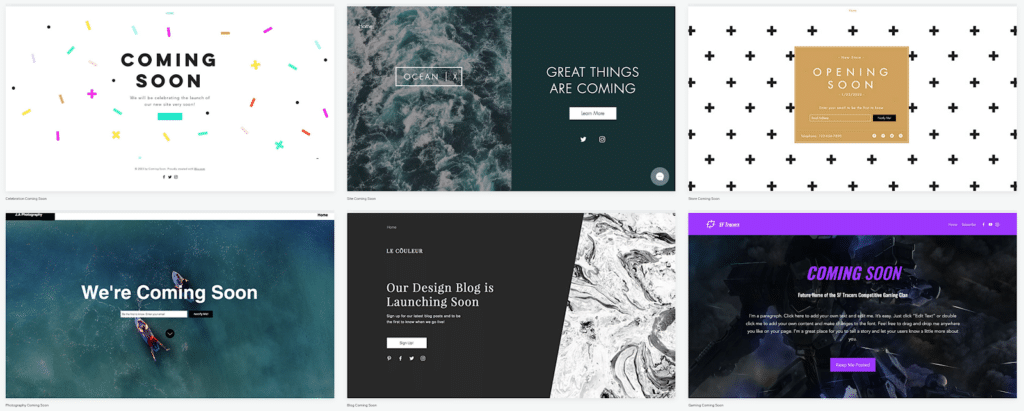
While setting up a pre-launch landing page is easy, getting the word out about your product may take some time. At the bare minimum, use a link to your page to:
- Announce your project is coming soon on your social media channels
- Send to friends and partners
- When doing preliminary niche blogger outreach (see the step below)
Your “Coming Soon” page can help you start collecting valuable data on your future customers. At this point I suggest installing the following tracking codes to start building up your data:
- Google Analytics (to know your most effective traffic sources and access user demographics)
- Facebook pixel (to track people who come to your site and be able to target Facebook ads to them)
- Finteza (to be able to create personalized campaigns for your site visitors)
Going forward, the more data you have, the more effective ads and on-site personalization options you will have at your disposal.
2. Plan your content strategy
Content strategy will take the most in your pre-launch marketing strategy because content is fundamental to the success of any digital marketing campaign (from SEO to ads). It makes sense to start preparing for your launch by creating some initial content now, before you’re busy with other things:
First, write your core content
This includes pages like Privacy Policy, “About us”, Terms of Service, etc.
Having these necessary – albeit pretty boring – pages done early will help you to focus on more important (and exciting) things when you launch.
Then, start working on putting your product in natural context
Which problems is your product solving? Start describing those problems and offering your product as the solution. Different content types you can start working on include:
- Use cases
- FAQs
- Comparison with competitors (how does your project stand out?)
- Blog posts
When you launch you want your site to address all possible use cases and initial questions. You may also want to have 5-10 blog posts to start gradually publishing them once your site is live.
To create your initial content strategy, use Text Optimizer. This service clusters your target search query into underlying concepts and entities. Use this to identify important associations with your target search query and build a page which would fit in.
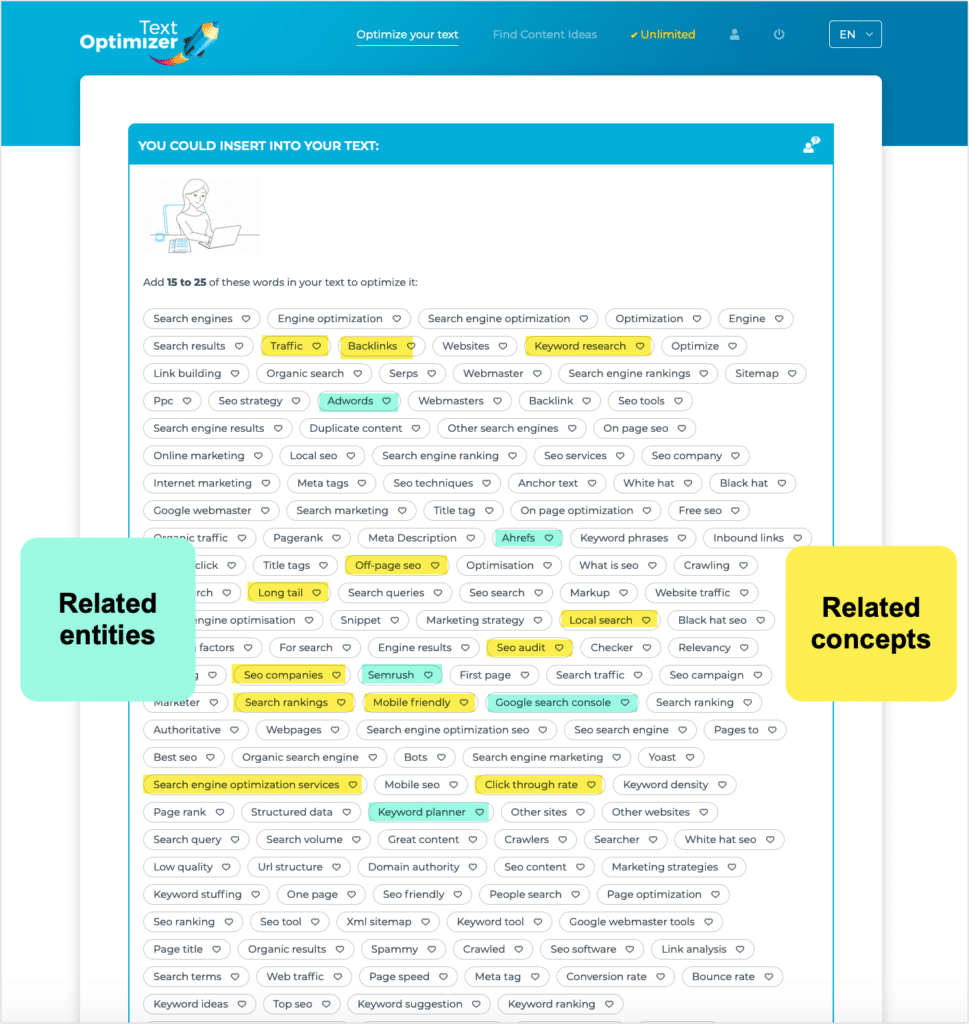
For example, if I were to launch a book on SEO, a landing page announcing it would need to include concepts like “traffic”, “local search”, and “backlinks” as well as “entities” (i.e. names) like “Google Search Console” and “Ahrefs”. In the future, blog posts and guides on your site would elaborate further on these key concepts and important entities.
This will help you determine how to meet your future customers’ expectations in the best possible way.
The goal is to create context which would put you in Google’s Knowledge Graph (i.e. Google’s understanding of the topic) next to already established brands:
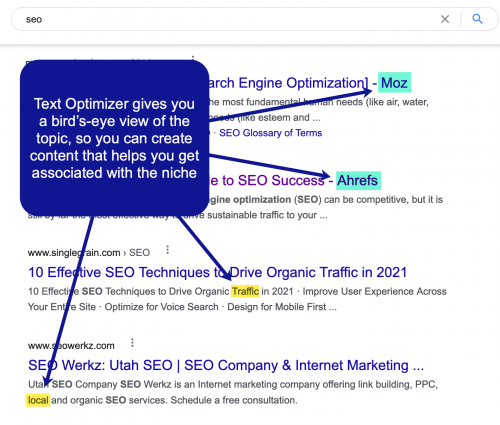
To help you out even more, here’s a good guide on creating an SEO strategy which includes goal setting and future result tracking which you may want to bookmark.
Lastly, start looking for your content collaborators
This is also a good time to identify who you are going to collaborate with when you launch. You need some niche influencers, bloggers, and journalists on your side to help you with your launch by:
- Showing up for your launch events
- Sharing about your product on their social media channels
- Providing initial feedback and social proof
- Announcing your launch on their website to drive traffic
- Helping you create more trustworthy content by providing their expertise, etc.
So start emailing niche bloggers and influencers asking them if they would be able to help and on which terms. This step will also help you plan your pre-launch marketing budget carefully.
3. Plan your product announcement campaign
Depending on your budget, a product announcement campaign may vary. Here I am sticking to a modest investment:
- Obviously, send an email to all your new subscribers (those you have generated through your pre-launch landing page). Make sure to note that they are part of pre-launch, so you’d love to know their feedback and get any help in promoting the project. This will build up some additional word-of-mouth marketing and turn some of those subscribers into beta testers and loyal brand ambassadors.
- Consider hosting a Twitter party with your subscribers. A Twitter party is a one-time Twitter chat allowing people to exchange ideas using tweets that all have a unique hashtag.
- Publish an official announcement on your social media channels.
- Host a live video with your most active subscribers and / or niche influencers announcing the launch. You can stream to Youtube, Facebook and Twitter’s Periscope. You can later re-use that video as Instagram IGTV video as well as permanent content on your Youtube channel and Facebook wall.
When hosting a Twitter party and / or live video, collect some initial feedback on the project. This will generate some initial social proof for you to use on the landing page and elsewhere.
- Invest in Facebook ads: Here you can go as aggressive as your budget allows. Just don’t forget to install Facebook’s pixel to keep record of people who visit your site and be able to re-market to them going forward. At this point you also start investing in data.
I suggest using these two resources to play with different ad formats:
- Here are a few Facebook ad mockups to create an eye-catching Facebook ad.
- Here’s an easy (and affordable) tool to create Facebook video ads.
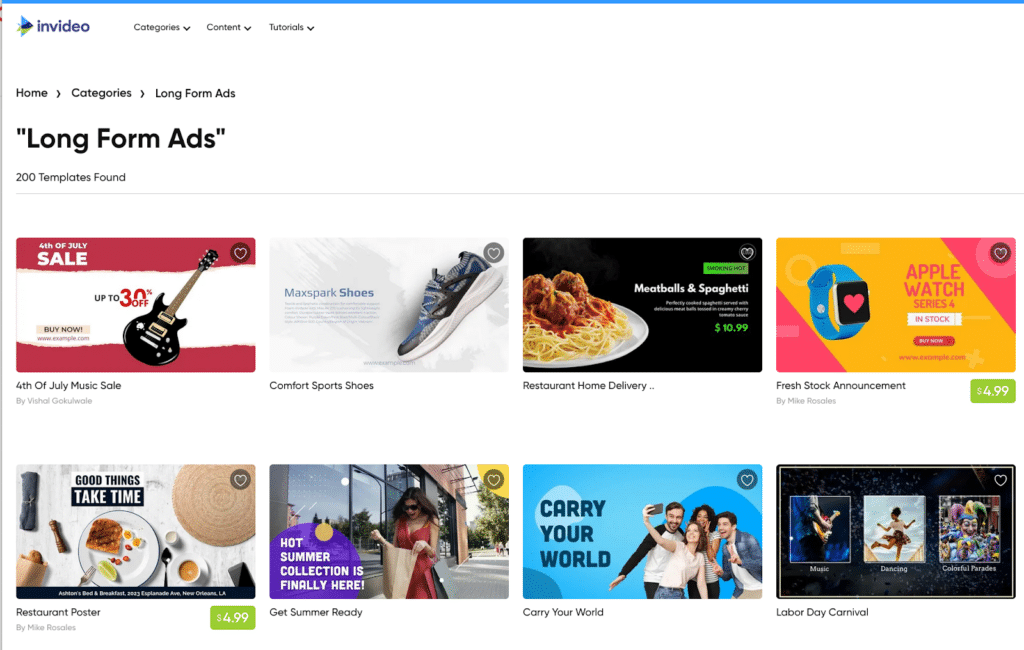
4. Bring everything together using a pre-launch marketing dashboard
A dedicated pre-launch marketing dashboard will help you keep your sanity and everything organized. You can use Cyfe to build a dashboard that will give you a bird’s eye view of the scope of work of your projects as well as help you to delegate efficiently when you are ready.
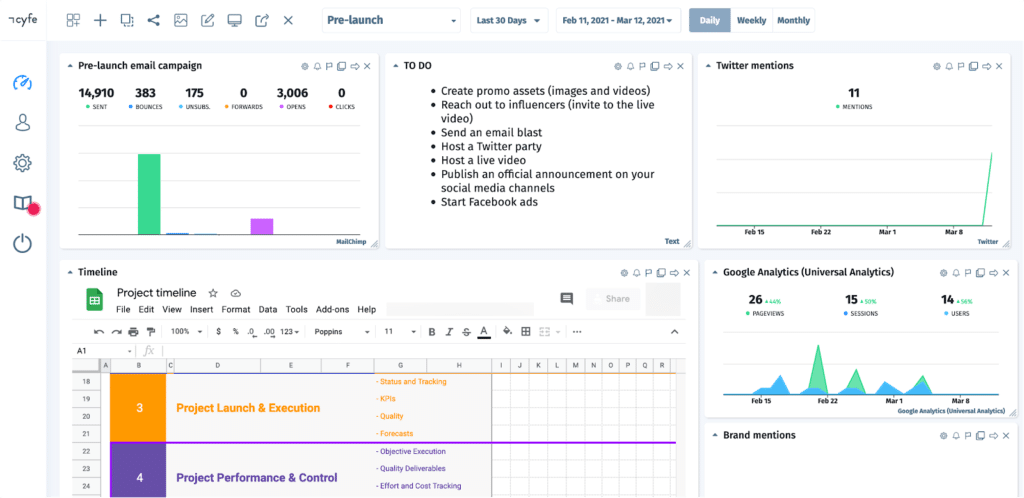
To manage my pre-launch strategy, I’ve added the following widgets:
- Project timeline to keep dates on track (I’ve added Google Spreadsheet via the iFrame widget)
- Google Analytics to keep an eye on my traffic numbers
- Brand mention monitoring widgets (Twitter mentions and Google alerts)
- Mailchimp stats (to keep an eye on my automated campaigns). There are more email marketing integrations if you are using something else.
Down the road, when your project is launched and announced, you can re-use this dashboard for your next pre-launch marketing campaign. Simply create a copy. You will be able to use many of the current widgets and add new ones as needed.
Best wishes for a successful product launch!



